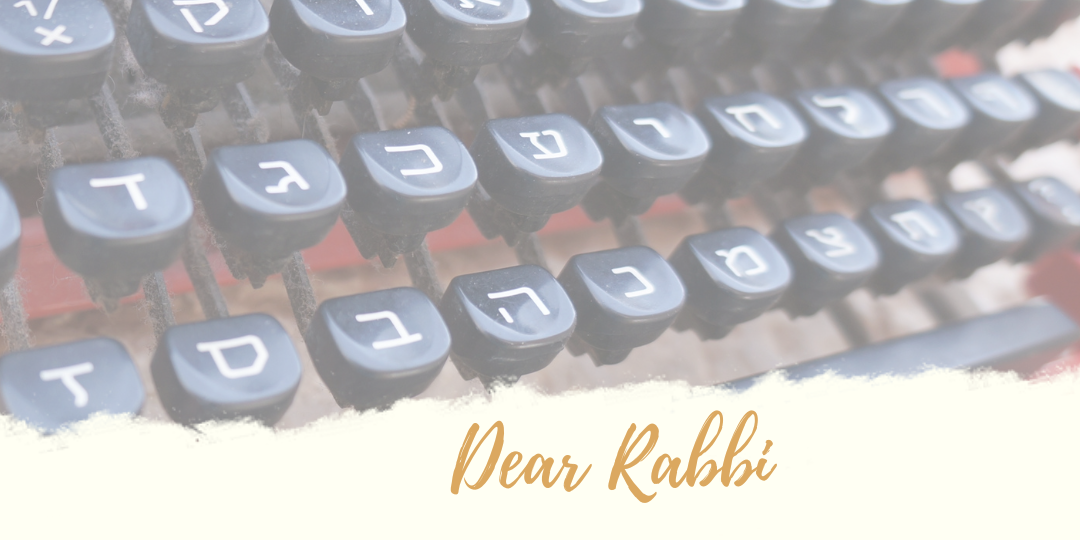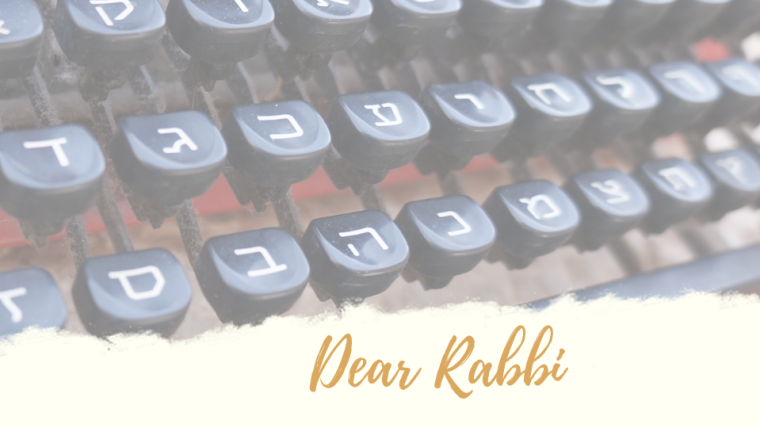Do you have a question for the rabbi? Write to Rabbi Ferro at rabbi@nhs-cba.org with the subject “Dear Rabbi…”
Dear Rabbi,
We’ve gotten a lot of snow lately. When I was a kid, we would always play in the snow when we had a chance, including on Saturdays.
I’m a lot more observant today than I was growing up, though, and I know that there are a lot of things we aren’t supposed to do on Shabbat.
No, I don’t really make snowmen or have snowball fights anymore, but my grandkids do. So I’m wondering: does halakhah (Jewish law) have anything to say about playing in the snow on Shabbat?
-Snowbody in Particular
Dear Snowbody,
I have good news and bad news. The good news is that halakhah has things to say about playing in the snow on Shabbat; the bad news is I don’t think it gives us a conclusive answer.
I’ll explain. We start with the Talmud, which doesn’t have much to say about snow one way or another. But it does discuss an idea called nolad, meaning “[just] born.” An item that is nolad is something that has just come into being, and these items are generally understood to be off limits on Shabbat: things we shouldn’t handle or move. But the Talmud tells us that rainwater does not fall into this category, and our later halakhic judgments mostly agree that this also extends to snow (R. Moshe Feinstein is a notable exception). So from that point of view, handling snow is not problematic in and of itself.
Then we come to a few other opinions which deal specifically with snowballs and snowmen themselves. The tendency in Orthodox halakhic literature is to forbid the making of snowballs on Shabbat but to permit the use of snowballs already prepared before Shabbat.
Two major figures we see articulating the mainstream view are Rabbi Shlomo Zalman Auerbach and Rabbi Moshe Stern. Permission to throw snowballs also assumes that you are not in a space where carrying is forbidden by Jewish law, i.e., that you are within an eruv or a private domain. A few Orthodox figures also permit even the making of snowballs on Shabbat. No mainstream Orthodox figures, however, permit the making of a snowman on Shabbat. While there may be other concerns at play for some rulings, the overarching concern about a snowman seems to be the sense that in putting snow together with more snow to form a particular shape, one is building something (boneh) and thus violating one of the thirty-nine categories of forbidden labors on Shabbat. I will not presume to offer a decisive halakhic ruling here for our community, but I do need to point out a few problems with the Orthodox position on our friend the snowman. All of the opinions mentioned above come to us from the mid- to late twentieth century.
So I am left wondering: Did the question actually never come up until then? Or did our prior legal decisors simply assume that Jews did not need guidance on this subject? We’re also left with other uncertainties. Authorities who feel that the halakhah “clearly forbids” the building of a snowman on Shabbat pull from a few different sources — chiefly, from the Talmud (Beitzah 32b) and Rambam’s Mishneh Torah (Hilkhot Shabbat 7:6). Both of these supports, however, are difficult to apply to our situation. The Talmud passage cited tells us that the rabbis issued a decree against building temporary structures on Shabbat lest we come to build permanent structures of similar design or using similar techniques and materials. For obvious reasons, extending this logic to include the use of snow as a building material is hardly a natural inference.
The Rambam suggests that “Whoever gathers one part to another part and sticks everything together until it is one body, this is surely similar to building.” We must note a few things here: First, Rambam is speaking in the context of making cheese — gathering up curds and putting them together to make a larger, solid mass of cheese. Second, the phrase used here is “similar to building” — which is very different from what was said in two consecutive sentences immediately before about other parts of the cheesemaking process: one is liable on account of a particular, identifiable forbidden labor.
Finally (and not insignificant here, as above), is that the passage has nothing to say about a material like snow which is inherently impermanent. Clearly the voices that permit the making of snowballs on Shabbat would agree that this Rambam does not apply neatly to that question, and one wonders on what ground it might apply differently to making a snowman.
In the end, it is not clear what the Torah or the rabbis of the Talmud have to say about snowballs and snowmen on Shabbat. Conservative Jews following more stringent patterns of observance are likely to refrain from these activities on principle — either because our Orthodox compatriots do, or simply because in the absence of a clear answer it is common to err on the side of caution.
If you’re committed to making the most of snowy days with kids, there may be forces pulling in the opposite direction. Jewish law commonly relies on explicit rulings and precedents but also has a reverence for established practice, and one can ask in good faith whether the absence of any discussion in the literature of “building” with snow for nearly two thousand years doesn’t establish its own sort of precedent, especially since we know that snow itself was not considered extraordinary by our sages (see Yoma 35b and Psalm 148).
We are told in the Torah (Deuteronomy 13:1):The whole of that which I command you — that shall you take care to do; do not add to it or take away from it. In accordance with this verse, we might find grounds either to forbid or to permit a wide variety of activities — including some common ways of playing in the snow. So long as it is done with integrity, I do not believe that either course is mistaken.



